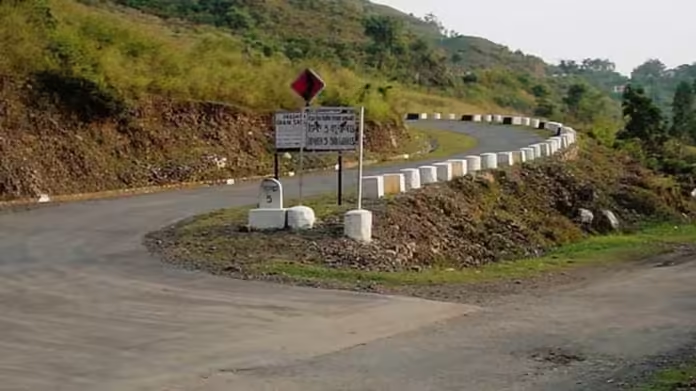The Ministry of Rural Development has sanctioned major road projects for Meghalaya and Nagaland under the Pradhan Mantri Gram Sadak Yojana (PMGSY-III). This initiative marks a major step forward in developing rural infrastructure in India’s Northeast region, aimed at enhancing rural connectivity, promoting economic growth, and improving the quality of life in these states. PMGSY-III is the latest phase of the Pradhan Mantri Gram Sadak Yojana, which focuses on consolidating and expanding rural road networks nationwide.
Understanding PMGSY-III and Its Vision
The Pradhan Mantri Gram Sadak Yojana (PMGSY), launched in 2000, aims to provide all-weather road connectivity to unconnected habitations, especially in rural areas. As the program evolved, PMGSY-II and now PMGSY-III were introduced to further strengthen the existing infrastructure and reach more remote and challenging locations. PMGSY-III, the latest phase, focuses on consolidating existing rural road networks by upgrading rural roads, improving quality, and increasing connectivity across different areas.
Objectives of PMGSY-III
- Enhanced Rural Connectivity: This phase emphasizes connecting habitations with all-weather roads, increasing the mobility of rural residents, and improving access to essential services.
- Economic Growth: Improved infrastructure paves the way for economic opportunities, allowing rural areas to tap into nearby markets for agriculture and small-scale industries.
- Social Upliftment: The new road networks provide better access to healthcare, education, and government services, fostering overall social development.
The sanctioned projects in Meghalaya and Nagaland are part of a broader national effort to improve connectivity in India’s rural areas, especially in remote and challenging regions.
Meghalaya’s Road Development under PMGSY-III
Key Projects in Meghalaya
In Meghalaya, where rugged terrains and frequent rainfall make connectivity challenging, the PMGSY-III projects aim to bridge the gap in rural infrastructure. Roads in areas such as the Garo Hills, Khasi Hills, and Jaintia Hills are targeted for development, improving access between villages and townships and reducing travel time significantly.
- Garo Hills Region: Known for its hilly terrain and remote habitations, the Garo Hills region will benefit greatly from the newly sanctioned roads, connecting remote villages and enabling smoother transport of goods.
- Khasi and Jaintia Hills: With extensive agricultural activities, these areas will see improved connectivity that will aid local farmers in accessing markets and enhance tourism potential in these scenic locales.
Expected Benefits for Meghalaya
The road projects under PMGSY-III in Meghalaya aim to bring economic growth by facilitating the easier movement of goods and people. Farmers and small-scale entrepreneurs will gain better access to regional and national markets, potentially increasing their incomes. Moreover, improved road connectivity is likely to boost the local tourism industry by making scenic spots more accessible to visitors, contributing to the state’s economy.
Nagaland’s Road Development under PMGSY-III
Key Projects in Nagaland
Nagaland, characterized by its mountainous regions, has long faced challenges in rural connectivity. Under PMGSY-III, the sanctioned road projects in Nagaland will improve access between several habitations and key marketplaces. Regions such as Dimapur and Kohima will benefit from upgraded road networks, helping Nagaland integrate better with national infrastructure.
- Dimapur District: The state’s commercial hub, Dimapur, will see new roads connecting rural areas with urban markets, making it easier for local products to reach wider consumer bases.
- Kohima District: In the state capital and surrounding areas, PMGSY-III projects will enhance intra-district connectivity, providing a smoother flow of goods and people.
Expected Benefits for Nagaland
With PMGSY-III, improved road infrastructure in Nagaland will lead to several benefits, including stronger economic growth in rural areas. Farmers in remote areas will have more straightforward routes to marketplaces, boosting agriculture and trade. Additionally, with improved road conditions, essential services such as healthcare and education become more accessible, raising living standards across communities.
Economic and Social Impact of PMGSY-III in Meghalaya and Nagaland
Promoting Economic Development
Road connectivity is essential for promoting economic growth in rural areas. The new roads will enable farmers to transport their produce to local and regional markets more efficiently, potentially increasing their income. Moreover, small-scale industries and entrepreneurs will benefit from reduced transport costs, as better roads allow smoother movement of goods and people, thereby improving productivity and economic output in these states.
Enhancing Social Infrastructure
Apart from economic benefits, the PMGSY-III roads will significantly impact social infrastructure. The new road networks will make it easier for residents of Meghalaya and Nagaland to access essential services such as healthcare, education, and government services, leading to improved social indicators. Schools and hospitals that were once difficult to reach will now become accessible, enhancing the quality of life in these rural areas.
Encouraging Tourism
With Meghalaya and Nagaland known for their natural beauty and cultural heritage, improved road connectivity is expected to promote tourism in these states. Tourists will have easier access to remote areas, potentially boosting local businesses and promoting cultural exchange. The scenic routes and unique culture of the Northeast have always been appealing to travelers, and PMGSY-III is expected to open up more areas to tourism, contributing to the local economy.
While the PMGSY-III projects promise to transform the rural infrastructure of Meghalaya and Nagaland, challenges remain. Both states have rugged terrains, which can make road construction and maintenance challenging. Furthermore, environmental concerns such as soil erosion and deforestation need to be addressed to ensure sustainable development. The Rural Development Ministry is focusing on building roads with durable materials and adopting eco-friendly practices to address these challenges.
The Ministry of Rural Development’s decision to sanction new road projects under PMGSY-III for Meghalaya and Nagaland is a testament to the government’s commitment to strengthening infrastructure in rural India. By bridging the connectivity gap in these Northeast states, PMGSY-III is set to pave the way for economic growth, improved social infrastructure, and enhanced tourism. This initiative holds the promise of transforming the lives of rural residents by providing them with better access to opportunities, services, and markets.




